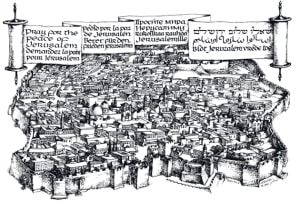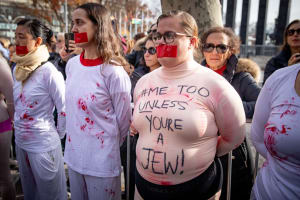After a year of ceasefire: Residents of northern Israel feel abandoned amid renewed escalation, Hezbollah rearmament
IDF carries out wave of airstrikes on Hezbollah launch sites on ceasefire anniversary

Although the ceasefire with Hezbollah has now officially held for one year this Thursday, the Lebanese border is by no means quiet, and this has led to significant frustrations among northern Israel’s residents.
On Thursday afternoon, the Israeli Air Force marked the anniversary with a wave of airstrikes across several sites in southern Lebanon, destroying “launch sites where Hezbollah weapons were stored” and a “storage facility that contained weapons, military posts … as well as additional terror infrastructure sites.”
The relatively large-scale wave of airstrikes came amid a steady escalation of Israel’s strikes against Hezbollah, which found a new zenith last Sunday with the elimination of the group’s military chief, Haytham Ali Tabatabai in Beirut.
There were also reports that Israel is considering a new ground incursion in Lebanon if the terror group doesn’t halt efforts to restore its weapon smuggling and production capabilities, further dampening the hopes of northern Israel’s residents for a time of peace, quiet and recovery.
For more than two years of war, Hezbollah forces bombarded northern Israel’s communities with rockets, drones and mortars, causing tens of thousands to be evacuated from their homes.
Many thousands have still not returned to the partially destroyed towns and villages on the border.
According to Kan News, 43 towns were evacuated in 2023. To date, 87% of those residents have returned home, but in some towns the percentage is much higher or lower.
In 13 towns, fewer than 70% of residents have returned, including Kiryat Shmona, the largest city in the Upper Galilee. But in eight communities – among them Dafna and Metula, Israel’s northernmost city – every resident has returned.
Shiran Ohayon, a resident of Kiryat Shmona, told Ynet News her family felt pressured to come back when they returned home in February, and said they were worried that the government’s pledges to rebuild could drag on for years.
“I hear about plans for two years from now, ten years from now. But where are you today? Where is our economic engine? Since Hezbollah’s chief of staff was eliminated, this whole region has been dead. Dead for business. We went from 100 to zero – and even before that, we weren’t at 100,” she said.
“This is the most beautiful region in the country – and we’re here for a reason. But we can’t stay here at any cost. They gave us NIS 15,000 per person in ‘return grants’ and said, ‘Now deal with it.’ The city isn’t ready for us. Not then, not now. In every aspect. This will become a national problem,” Ohayon said.
“The tanks left, but the potholes stayed. The city is still wrecked. In terms of education, they closed a school and kindergartens... Two ambulances for 70,000 people. No personnel. Recruiting teachers and doctors? That’s a national mission.”
Shimon Amar, who owns a falafel shop in the city, called on the government to show the same level of commitment it demonstrated in the Gaza Envelope. “What they gave Sderot, we should receive double. There are good people here, a strong north,” he told Ynet.
“I believe the prime minister cares about this region. He can come here with his ministers and look after Kiryat Shmona. It’s a shame. This is an amazing place with amazing people. It hurts – 15 families have already left my neighborhood. We’re short 8,000 residents. This was a flourishing city before the war.”
The Israeli government has earmarked approximately NIS 600 million to rebuild the north, but about 70% of the businesses are categorized as having difficulties recovering.
Authorities expect the recovery process in the northern region to continue until 2029.

The All Israel News Staff is a team of journalists in Israel.
You might also like to read this:

















